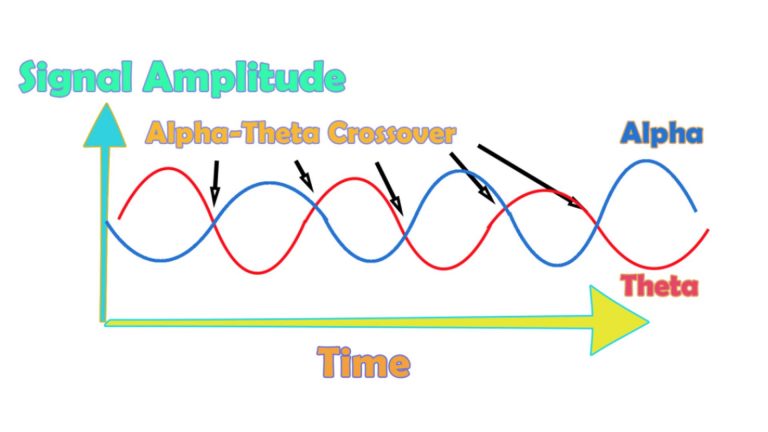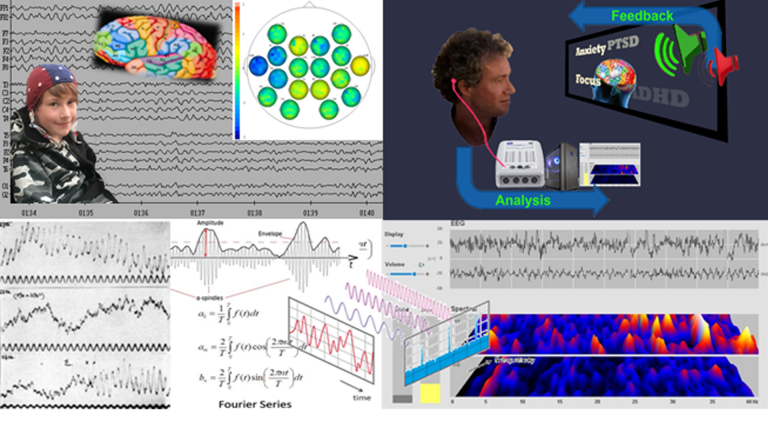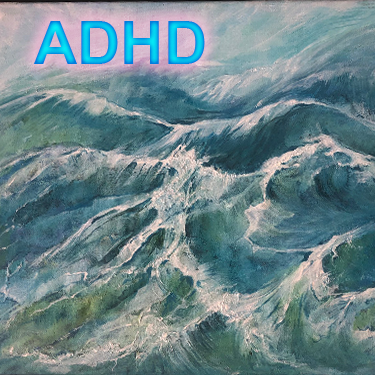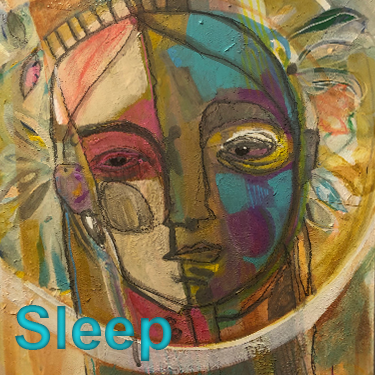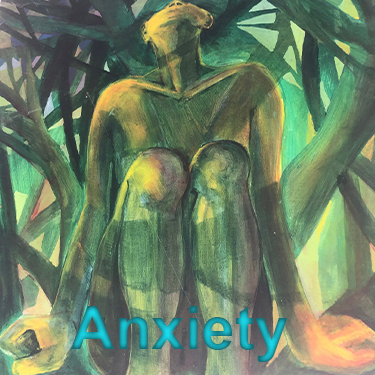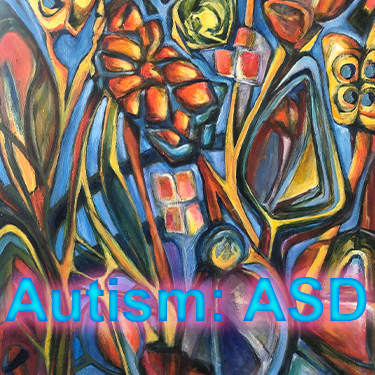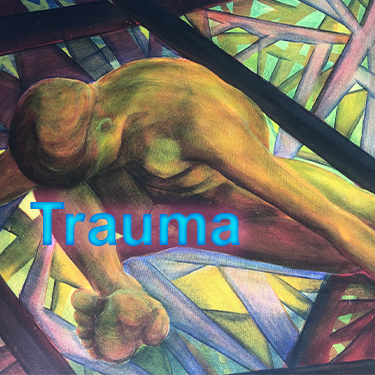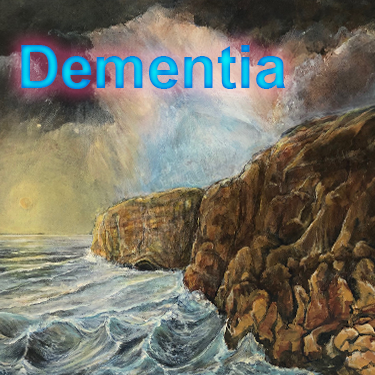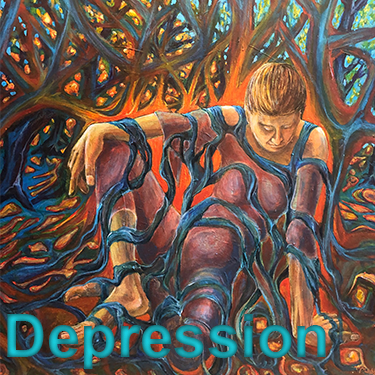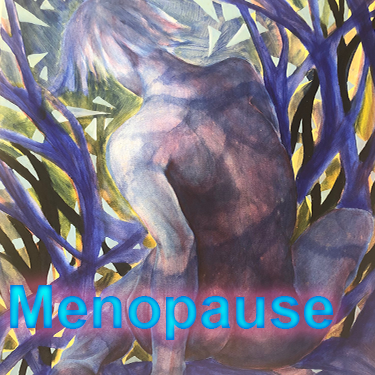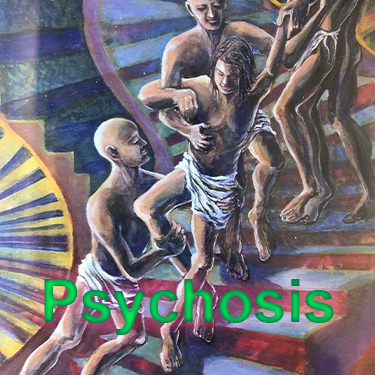Alpha Theta Neurofeedback and PTSD
Alpha Theta Neurofeedback Training
Alpha Theta neurofeedback training guides the brain through gentle oscillations between alpha and theta dominant states. The idea is that memories are accessed during theta dominance that can then be safely processed during alpha modulation.
Theta and alpha refer to different frequency bands of prevalent brain activity. When the slower, theta, is dominant, our brain is typically closer to sleep and our cortical activity is lower, in favour of more basic, sub-cortical structures. Alpha is a state of disconnected relaxation, and represents the core organisational frequency of our cortex. Each state activates a different part of the salience network, and reflects a mental transition between awake and pre-sleep, or shifting from extra- to intrapersonal based processing.
A session is usually thirty minutes, or multiples thereof, as the brain takes a few minutes to settle before commencing its alpha – theta modulation. The transitions between alpha and theta dominance are often visible on the EEG monitor, as they appear as ‘cross-overs’ every few minutes. Should a participant transition into actual sleep, delta activity will increase visibly. Sufficient mental calming before starting alpha theta training helps maximise training effects.
Alpha Theta training is done in a quiet room with minimal sensory input. The feedback is auditory, as two different but related soundscapes (e.g. waves vs. waterfall) smoothly transition, indicating to the brain which state is prevalent (alpha or theta). Participants describe the experience as intensely relaxing, sometimes emotional, and compare it to a power nap, feeling mentally and emotionally refreshed.
Neurofeedback Alpha-Theta training can be combined with guided imagery to address and process more complex, specific issues. It can also serve as a complement to cognitive psychotherapeutic approaches. Additionally, alpha-theta training has been shown to improve creativity and musical performance.
In preparation of Alpha Theta training, we recommend Personalised Brain Training based on a qEEG brain map.
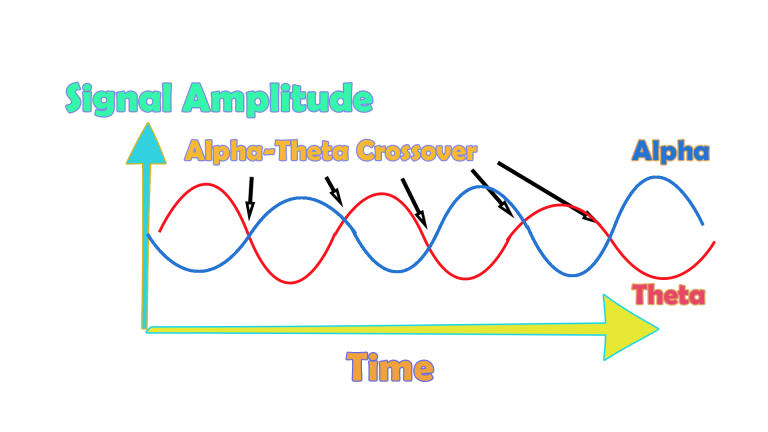
Daniel Webster uses a specialised form of neurofeedback training – Personalised Brain Training – to improve brain function and mental health.
Trauma, PTSD, anxiety and depression respond to this non-invasive, medication-free approach. It is a scientific method that is evidence-based and requires minimal conversation. Daniel’s method obviates the need for invasive talks and unearthing of repressed memories and emotions. It is forward-looking, and equips us with the tools needed to get back on the saddle and enjoy life to its fullest.
Alpha Theta and Trauma Resolution
The Brain Keeps the Score. It also shapes our Future.
All physiological self-regulation is ultimately initiated by the brain in anticipation of changing needs. Sensory input and memory capture present and past; our brain has the ability to model potential outcomes for what’s next and prepare the body, including its own cerebral blood flow.
Our Default Mode Network of key neural hubs provides us with the ability to abstract, that is, to reflect on the past and imagine the future, or next event. Activation of this network is in constant flux with our Salience and Task Positive Networks. This serves to update our model of the world around us, and the possibilities for next action.
Flexibility is key to living in the moment, adapting to changing circumstances and shaping the future in the best possible way.
Personalised Brain Training helps us optimise our use of resources and set new trajectories.
Trauma is fundamentally an inability to self-nurture – creating an emotional safe-space around us – and self-soothe – being able to talk ourselves down rationally from a situation. This can also manifest in dissociation and heightened pain perception, fibromyalgia and chronic fatigue. We ruminate about the past and worry about the future, instead of being able to enjoy the present.
Trauma and Anxiety are a result of inefficient sensory processing. We explain the scientific background and how neurofeedback training works in the following tabs:
(Scroll down on mobile)
Trauma is fundamentally an inability to self-nurture – creating an emotional safe-space around us – and self-soothe – being able to talk ourselves down rationally from a situation. This can also manifest in dissociation and heightened pain perception, fibromyalgia and chronic fatigue. We ruminate about the past and worry about the future, instead of being able to enjoy the present.
Trauma and Anxiety are a result of inefficient sensory processing. We explain the scientific background and how neurofeedback training works in the following tabs:
(Scroll down on mobile)
Alpha Theta Neurofeedback Training
Alpha Theta neurofeedback training guides the brain through gentle oscillations between alpha and theta dominant states. The idea is that memories are accessed during theta dominance that can then be safely processed during alpha modulation.
Theta and alpha refer to different frequency bands of prevalent brain activity. When the slower, theta, is dominant, our brain is typically closer to sleep and our cortical activity is lower, in favour of more basic, sub-cortical structures. Alpha is a state of disconnected relaxation, and represents the core organisational frequency of our cortex. Each state activates a different part of the salience network, and reflects a mental transition between awake and pre-sleep, or shifting from extra- to intrapersonal based processing.
A session is usually thirty minutes, or multiples thereof, as the brain takes a few minutes to settle before commencing its alpha – theta modulation. The transitions between alpha and theta dominance are often visible on the EEG monitor, as they appear as ‘cross-overs’ every few minutes. Should a participant transition into actual sleep, delta activity will increase visibly. Sufficient mental calming before starting alpha theta training helps maximise training effects.
Alpha Theta training is done in a quiet room with minimal sensory input. The feedback is auditory, as two different but related soundscapes (e.g. waves vs. waterfall) smoothly transition, indicating to the brain which state is prevalent (alpha or theta). Participants describe the experience as intensely relaxing, sometimes emotional, and compare it to a power nap, feeling mentally and emotionally refreshed.
Neurofeedback Alpha-Theta training can be combined with guided imagery to address and process more complex, specific issues. It can also serve as a complement to cognitive psychotherapeutic approaches. Additionally, alpha-theta training has been shown to improve creativity and musical performance.
In preparation of Alpha Theta training, we recommend Personalised Brain Training based on a qEEG brain map.

Self-Regulation and the Brain
Trauma and anxiety cloud our perception and curtail a positive outlook. We discuss the various manifestations of each lower down this page.
Left untreated, a negative feedback loop can ensue: We lose synchrony with our environment, resulting in reduced drive, motivation, activity, interaction, recuperation (sleep) and functionality. What’s more, this traps us in a cycle that makes effective social contact more difficult, and thus deprives us of further options.
Trauma and Anxiety are a result of inefficient sensory processing. The understanding of our environment which we obtain from our senses does not relate to that experienced by others. We become unable to synchronise and share a reality, a core requirement for human interaction. It is a road to isolation, in particular perceived solitude.
Perception and emotional response start in the head, though their manifestations can quickly become physical. Pain perception has clear neural correlates. Our brain controls our Autonomous Nervous system, and hence our physiological tone and flexibility.
With a Kaiser Neuromap we can identify dysrhythmia of relevant brain areas, both emotional and physical, and then train these with neurofeedback.
We are restoring the brain’s ability to digest past events, look positively into the future and engage effectively in the present. It is a forward-looking approach that is also holistic – as well as training brain areas responsible for arousal, mood and vigilance, we restore focus, drive and motivation, thus restoring self-confidence in a multi-faceted way.

Our autonomic nervous system is primed to produce sympathetic nervous system responses, or fight-flight-freeze mode. This wears us down, as it is more energy intensive, our recuperation periods are shortened and we can even become used to the adrenalinergic buzz of being in hypervigilant overdrive. It becomes a safe space. Our pain perception is altered and fluctuates between numbness and hypersensitivity. Deprived of a ‘calm’ reference state, we become vulnerable to overattributing emotions to sensations.
Dissociation is another phenomenon that can ensue, and this can be subtle and paroxysmal. Engagement of defensive mechanisms is triggered pre-, or subconsciously. This can compromise our ability to rationally self-soothe – the role of our prefrontal cortex. Instead, our limbic system is primed. We also lose our emotional sense of safety. The integrity of our Default Mode Network is challenged, as is the natural transition between its activation and that of the Task Positive Network. We are less able to regulate engagement with our environment and the neurological basis for our sense of self is under threat.
There are distinct brain areas regulating pain, physical sensations and our self-awareness, and we can train these with neurofeedback. We can also train brain areas with strong connections to sub-cortical structures that regulate our autonomic nervous system, including the amygdala and our reticular activating (or limbic) system. Our brain is ultimately in charge of trauma response, and with neurofeedback we can assess vulnerability to its various submodalities, and address these with training. This is evidence-based and effective.
Trauma Symptoms
Trauma is essentially when we’re not expanding – when we are restrained in our ability to unfold our personality, ambitions and realise our dreams.
This can be precipitated by specific events, or an aggregation of contributing factors to our inability to self-nurture.
Our ability to find emotional security becomes impaired, and we begin to worry about the future, ruminate about the past. We become subtly detached from the moment and its meaning. This is the beginning of mental health issues.
Alpha Theta training provides a way of gently returning the brain from certain patterns of dissociation and process these with appropriate detachment and rationale. Neurofeedback training then helps the brain to restore functionality and resolve these in a forward-looking manner. We recommend ongoing neurofeedback training with alpha theta training.
The first indication that we are experiencing trauma / PTSD is when we find ourselves not living in the present. Enjoyment of the moment and social interaction is clouded by constant ruminations about the past, and worries about the future. We are unable to ‘let go’, relax, and grasp opportunities as they present themselves in the Now.
We are plagued by intrusive thoughts that bring us back to events in the past, which needn’t even be related to a traumatic event, but which remind us of some inadequacy and amplify our self-doubt. Feelings of shame and guilt come into the picture as well, further eroding our self-confidence. “How can I be happy and enjoy this after what has happened?”. Similarly, our perception of the future is shrouded in worry and fearful anticipation. Uncertainty is our greatest foe, our perception of safety is unhinged by any doubt as to what could happen next.
The absence of a plan becomes a concern, the lack of clarity as to what’s around the corner a burden. Negativity associated with the past deprives us of hope. We are thus unable to see uncharted territories ahead as an opportunity, and much rather dwell on impending threats.
Indeed, our system is primed to protect us, and we are in survival mode. This process becomes self-feeding as we become addicted to the hyper-arousal our sense of fear induces. Our sense of joy and looking forward to fun becomes clouded to the extent we forget and no longer yearn it. Detachment sets in, further isolating us from feelings that previously motivated us. This process can even start slow and subtly, yet the cycle is self-fulfilling and deprives us of the necessary perspective to break and get out.
In Personalised Brain Training, our definition of trauma is wider. We include for example perceived loss of social standing, which can be either the cause or the consequence of a traumatic event or development. The perceived loss of social position results in us feeling judged. We become hypersensitive to how people approach us, talk to us, deal with us.
This is a subjective concept, as it should be, given that trauma should be recognised as an issue of perception by the affected person, rather than a concept being ‘awarded’ by an unrelated party, though external affirmation can help and medical advice should be sought in any event. As humans, social recognition is a critical component of our biological drive to propagate. Attraction relies on this, which ultimately leads to bonding.
Consequently, there are numerous brain areas devoted to, or involved in, the assessment of our position with regard to others. When our self-perception is assailed, or even the viability of our self is questioned, we are naturally shaken. Various brain areas become dysrhythmic. These include areas responsible for our body control and awareness, and many therapies focus on engaging the body and somatosensory system with a view to inducing cerebral changes.
However, this is only a part of the picture – there are many, arguably more powerful neuronal centres in the brain that are affected by trauma, and with a Kaiser Neuromap and Default Network Training (together, Personalised Brain Training), we can assess the issues more accurately, completely and efficiently, as well as then successfully training the brain to overcome trauma and setting ourselves on course for a positive trajectory.
Another consequence of trauma is that we may feel unable to rationally assert a sense of safety. This is different to self-nurture, or an emotional sense of safety. When we are unable to talk ourselves down from a situation we lose the ability to effectively regulate our moods, to switch off when we need to, and ultimately can become excessively paranoid.
There are neural correlates for this behaviour, and we can asses this with a Kaiser Neuromap. Safety and assurance are core needs we are programmed to seek to fulfil. Authority and role models help us in this quest. When we become dysregulated in our ability to self-soothe, we are also compromised in our ability to find paternal guidance. As a result, we tend to over-idolise figures who seemingly exude strength and power, or disobey completely and become unnecessarily rebellious – both immature behaviour patterns. Resetting this balance is crucial to achieving calming, regulated emotions, reduced hypervigilance and controlling impulsiveness. Personalised Brain Training lets us achieve this.
When hypervigilance persists untreated, we face further problems.
Physically, our heart beats faster and harder, more of the time, which is a clear stress on our system.
Mentally, we become prone to developing intrusive thoughts, even when we are able to relax, and more so when we are stressed, where these can take on third-person character, a voice in our head. This can have a destabilising effect, not least because we are now spending energy ‘defeating’ other perspectives we are internally engaged with, and thus distracting us from the ‘now’. Being on hyper-alert can also make us more susceptible to feeling relational to sensory input, in that we feel that everything is directed at us, which can set us up for psychosis.
As we lose our ability to enjoy the moment, our social interactions suffer. Exercising our social brain keeps us alive and forms the basis for sound mental health. Our brains are adaptive, and we need to provide stimulus to maintain connections and sustain flexibility. Isolation deprives us of many necessary exercises. For example, brain areas that deal with face recognition also respond to affective interactions and the ability to discriminate between emotional content of faces. We need to keep training these brain areas through social interaction in order to maintain emotional recognition – it is not a surprise that perpetual mask-wearing heightens our social anxiety (aside from adverse physical effects).
Social recognition, a key component of our biological need to attract and bond, is driven by sensory interpretations. Again, we need to exercise brain areas that contribute to this, including language and speech generation and comprehension, auditory sensitivity, and monitoring rewards for actions, both directly and vicariously. Our mirror neuron system contributes towards learning from others’ mistakes or examples, and consequently the storage of social rules necessary for constructive functioning in a society.
Inclusion is imperative to establishing a healthy self-image or sense of self. This in turn is crucial to forming stable relationships with friends, family and forming healthy alliances necessary for personal and professional progression. When we lose our sense of belonging to a group or cause, we may become unstable in our self-perception and our relationships with others. The effect may snowball into perceptions of abandonment, feelings of emptiness and dissociation; this in turn correlates with mood dysregulation, impulsive and often dangerous behaviours, intrusive thoughts and potential self-harm.
With Personalised Brain Training, we can assess vulnerability to these traits as they manifest in functional brain area dysrhythmia that shows in a Kaiser Neuromap; with Default Network Training, an advanced form of neurofeedback, we can train these brain areas and networks in a holistic manner to help re-establish balance. This enables us to reconnect with our environment and re-enter a positive feedback loop.
Sleep is adversely affected by trauma. First, the mind needs to ‘let go’ in order to enter deeper sleep cycles, which is a challenge for many. Excessive rumination and intrusive thoughts can hinder this, as does the loss of our ability to rationally calm ourselves down. The depth of our sleep is governed by our ability to self-nurture and create an emotional ‘safe space’. Homeostasis during various sleep stages is governed by other parts of our brain, some still involving the cortex. With a Kaiser Neuromap we can detect dysrhythmia in the relevant brain areas and train these accordingly with Default Network Training (together, Personalised Brain Training).
Focus and organisation suffers as a consequence of sleep issues. This time, different brain areas are affected, which we can also train. When we are unable to concentrate and produce our best output, we become demotivated and our mood and sense of self suffer. Again, there are brain areas responsible for these aspects of being, for which we can again detect dysrhythmia and provide neurofeedback training. The process is holistic – many components have to work together effectively for us to function optimally.
Mood regulation suffers when we lose social integration, sleep and focus. Neurofeedback training found to significantly help 80% of people with depression by aiming to restore motivation, improving sleep and focus, and reducing anxiety.
There are numerous potential cortical contributors to depression, and with a brain map we can see vulnerabilities.
Neurofeedback training lets us address these as well as establish a generally improved sense of well-being in a holistic manner. he positive effects of neurofeedback training have been shown to be lasting. Neurofeedback is non-invasive and medication-free.
There are multiple types of anxiety, each correlating with one or more brain areas being dysrhythmic:
- Social anxiety: When we’re in a situation with other people and our understanding of the social dynamics and complexities is overwhelmed.
- Sensory overload: our brain interprets all sensory stimulus as directed to ourselves. We lose the ability to discern what is directed at us, and which matters or interactions are of no concern to us. This sets us up for panic attacks and ultimately psychosis. It also means we become singular in our perspective, unable to take on other points of view
- Loss of narrative: Our episodic understanding of the situation, how we got there and what happens next, is impaired, and we are unsure of where we are and where we’re going. This hyperactivates our amygdala, and the sensation is highly emotional
- Auditory sensitivity: we become prone to overly interpreting the emotional content of words and sounds, creating an air of prickliness and pushing people away without knowing it
- Activation: Our ARAS is responsible for setting the right level of physiological arousal, or wakefulness, for the situation, and to remain stable there. When this is on overdrive, we are pushed further into fight-or-flight mode than necessary, thus heightening sensory sensitivity. Panic attacks are an extreme manifestation.
- Trauma: an inability to self-nurture – creating an emotional safe-space around us – and self-soothe – being able to talk ourselves down rationally from a situation, thus resulting in mood instability. This can also manifest in dissociation and heightened pain perception. We ruminate about the past and worry about the future, instead of being able to enjoy the present.
- Intrusive thoughts: Self-criticism overshadows motivation and confidence, and we become self-aware and distracted by negative thoughts and feelings. Some use acquired habits to distract from this. Our confidence, motivation and social interaction suffer as a result.
The primary issue of trauma affects brain areas that are activated during empathy and forgiveness. With these two qualities impaired, our emotional life suffers, as do our social capacities. With neurofeedback training, we can restore functionality of these brain areas. Another reason this is important is because we do not want to become oppressors ourselves. As we lose our sense of emotional investment in our surroundings, we become careless with regard to others’ feelings and needs.
Implicitly, we are now capable of unintended yet real behaviour patterns that can harm others, as we become deaf to feedback. Not only has trauma affected us, it now makes us perpetrators that pass it on.
Besides reduced social interaction and a less meaningful emotional life that is now more self-centred – and with the wrong type of therapy, becomes self-indulgent and self-perpetuating – we can experience a physical withdrawal from our environment. Dissociation can be momentary and intense, or subtle and ongoing to the extent that we are not even cognisant of it. Either way, our bodies retreat from sensations, analogous to our emotional withdrawal.
Many therapies aim to revive our sense of ownership of our bodies, and thus ultimately our life and future, by training our body awareness in various ways. Realising that our bodies are steered by our mind, specifically our cortex, we can train the relevant brain areas that govern our body perception and movement execution.
Neurofeedback training effectively complements these approaches by directly treating the areas involved in perception and interaction with our surroundings.
One of the first manifestations of trauma is in our bodies. Aside from heightened physiological arousal, a form of paralysis can override our natural motions and postures. Stress, and pain ensue, which can often be felt all around the body. Fibromyalgia is a variant of this phenomenon, as are headaches, chest pains, and chronic fatigue.
There are many techniques for combating this form of physical dissociation. Neurofeedback complements these by training the brain areas that instruct the body to behave in this undesirable way. It is a holistic approach, and we restore overall calming while providing the brain with rational and emotional capacity to overcome its challenges.
Trauma and Empathy, Forgiveness
A brain area directly affected by Trauma happens to govern our ability to empathise, as well as our capacity to forgive.
Importantly, this is borne out of physiology – the physical reality of bodily functions (in this case, the brain) controlling our personal and social functioning. This is different to, say, psychology, which attempts to model behaviour patterns and their linkages, on a more academic, and hence detached, level. Physiology is real. We can observe the relationship between social and emotional conduct and the activity of specific brain areas, and there are over 200 such studies conducted annually.
When brain areas become dysrhythmic, such as through the impact of perceived trauma, their ability to direct other aspects of our being and interaction can become impaired. As a result, we can observe how a person’s scope for internalising other’s emotional state is reduced. The ability to forgive, overcome judgements and move on, is similarly compromised.
An example of how being traumatised may impair one’s ability to show empathy and forgiveness, or emotional insight and compassion, is possibly the story of Bessel van der Kolk, author of “The Body Keeps the Score”. The author of this popular book examining the physiology of trauma, which notably ends with a chapter on Neurofeedback, was himself fired from his own trauma centre, by another entity. A 2018 Boston Globe article asserts that he was “fired from his job over allegations that he bullied and denigrated employees at his renowned Trauma Center”, though this should not be confused with allegations against another director at around the same time “for violating the code of conduct in his treatment of women”. Arguably, an involuntary, surprising exit from a place of work he contributed towards for 35 years could be seen as a traumatising event. An apology letter by Bessel van der Kolk on his own website has been extensively analysed – see “The Anatomy of an Apology”.
On a mission to “better understand and treat the evergrowing number of trauma victims produced by this harsh and violent world of ours”, it seems clear that Bessel van der Kolk has grown from the experience of being a victim. Formulations such as “the vast majority .. did not experience me in this way” and “we have negotiated a settlement” might leave some readers to question whether there was ever a possibility that someone in his organisation felt accordingly victimised. We now have the concept of “pernicious” victims, which appears to be an oxymoron – did they even exist? If not, why settle? With whom? Either the ostensible victims have not been able to forgive, or Bessel van der Kolk – himself a perceived victim – has not forgiven his accusers, or indeed both.
We hope that Bessel van der Kolk’s tour de force continues to dispel any doubt and evil, while extending appropriate sympathy to victims (should these have ever existed).
Having been traumatised by this experience, Bessel van der Kolk certainly appears to see himself as a victim. His reactions show how important empathy for victims, and forgiveness is.
Perhaps another corollary is that trauma can be a perception issue, and attempts to formulate this into reality may create perpetrators out of self-perceived victims.
In this letter, Bessel van der Kolk appears to give some credence to the possibility that some victims could have felt this way about some occasions of his alleged behaviour. In it, he appears to provide ‘little’ insight into how this could have arisen, while partially acknowledging its credibility (“such accusations cannot be entirely pulled out of thin air”).
A compassionate insight into the reasons why alleged victims find it difficult to confront the alleged perpetrators appears to be lacking (though his own book suggests that trauma results in suppression and an inability to confront the event, or its memory).
A 2018 article quotes him addressing power imbalances in the workplace, indicating a virtuous transformation: “That is a reality. I’ve grown up in the medical world, and people have said all kinds of things, like, ‘If you ever do this again, I’ll fire you,’ and ‘I will not promote you unless you do this…’ You just suck it up. Certainly, when I first started the trauma center a long time ago and came from that world, I thought that was sort of OK. But very quickly my colleagues said, ‘No, we don’t do it that way. So I learned I should not adopt the model I was trained in in medicine.”
Two years on, in 2020, a legal resolution seems to have been reached, involving an undisclosed settlement, and Bessel van der Kolk explains the situation, confirming that the allegations of “denigration” and “bullying” were “pernicious”. He humbly adds that “while I’m deeply committed to be kind and empathetic, I am also aware that, in times of stress, there is room for me to improve my interpersonal sensitivity”, noting that “the vast majority of persons with whom I have worked for forty years did not experience me in this way”.
Excerpts from Bessel van der Kolk’s letter to his colleagues, that had been placed publicly on what appears to have been his website with an invitation to share:
“Dear Trauma Center colleagues,
As you can imagine, I am devastated reading the allegations in the Boston Globe that I have been bullying and denigrating my colleagues at the Trauma Center.
I am also aware that such accusations cannot be entirely pulled out thin air, and that some of you may have felt hurt by me, even though none of you have ever confronted me with such misbehavior. If I have inadvertently denigrated or bullied any of you,I would like to know about it, apologize and make amends.
As you know., I am a strong believer in doing your own personal work, and in my book, the Body keeps the Score, I describe some of that journey for myself,.
If you do not feel that Andy Pond’s insinuations represent reality, I hope you will be vocal and public about how you feel about character assassination, and speak your truth.
Thank you, and I hope to see you all under better circumstances.
Devastatedly yours,
Bessel
Feel free to share.
Bessel van der Kolk MD
Medical Director Trauma Center
Professor of Psychiatry
Boston University School of Medicine”
Note that different versions of this letter exist, though with substantial similarities. A Facebook page created during the year of launch of “The Body Keeps the Score” (2014) has a post from 10 March 2018. To our knowledge, the existence of such letter has not been refuted, and the Facebook page still stands, whereas the URLs www.besselvanderkolk.net and www.besselvanderkolk.com appear linked, according to various searches into their history. Should such relationship never have existed, the Facebook page fake, the letter (in any permutation) not have existed, this should be made clear such that such impression is not reasonably created, and we would look forward to supporting Bessel van der Kolk in clearing up such needless confusion.
In summary, trauma has a physical effect, and by addressing its physiology, we can help healing. Neurofeedback provides such a method, as is evidence-based, confirmed both by science and popular literature.
Traumatic experiences undoubtedly affect our current behaviour, and as a result, how we shape our future.
A reduced capacity for empathy and forgiveness is one such example, as described above.
Memory of traumatic events is embedded in our physiology. By this we mean that memory is synaptic, that is, a biological phenomenon. We have known this since the 1950s, from the case of “patient H.M.” – probably the most studied person in the history of neuroscience. This patient was able to access old memories while being unable to form new ones following an operation that removed part of his hippocampus as a treatment to relieve seizures. A new level of complexity in the process of memory formation by the brain was thus discovered.
There are different parts of the human brain that store, and recover memories of events. Narrative, or declarative memory, involves many cortical areas. Conditioned responses, such as physical reactions learned during situations that put our very existence to test, i.e. trauma, are often not associated with conscious recovery of the event that spawned them. Learning in this case involves sub-cortical structures, and their recall might only have physical manifestations, such as changes in physiological arousal that appear disproportionate, and as such confusing given the lack of accompanying narrative. These can include sudden intense feelings, sensory processes, avoidant behaviours and even flashbacks and dreams. Seemingly irrational due to a lack of associated narrative, they are still ‘held’ within our brain.
These forms of conditioning can interfere adversely with our everyday lives in many ways. Some forms of therapy focus on the physical manifestations, in effect retraining our brain by expanding its flexibility to induce calmer, more rational or appropriate physical and physiological behaviour. Yoga, breathing exercises, team sports, singing, dancing, acting and music production are some of these.
Neurofeedback provides us with a complementary approach to help the brain achieve better flexibility.
There is considerable doubt as to the validity of repressed memories. Accessing these through interventions, in their various guises, has been shown to be a controversial endeavour in many cases.
An example of this is the story of Patricia Burgus, whose postnatal depression was diagnosed as a multiple personality disorder. Subsequent therapy utilised multiple ways of ‘accessing’ her repressed memories, with the result of unearthing satanic cults, expanding her perceived number of personalities from 20 to 300, and withdrawing her children from her care in placed into a psychiatric hospital.
Cases such as these tested the reliability of the interventions used in the 1980s and 90s, and saw a subsequent reversal in this trend.
Neurofeedback provides us with a complementary approach to help the brain achieve better flexibility.
Alpha Theta Neurofeedback Training to Resolve Trauma
With Alpha Theta Neurofeedback Training, we are putting the mind in a state where it can relax and start healing. Alpha Theta neurofeedback training holds the participant in a state of deep relaxation, where memories can safely surface and as a result be processed. The concept is that traumatic memories are put into long-term storage, where they can be recalled from, without the adverse emotional state attached to them.
Another key advantage of alpha theta training for trauma resolution is that most of the digestion happens at a subconscious level – we are not asking someone to relive their trauma, but rather enable the brain to order such experiences by itself.
In thirty minute sessions, eyes-closed, we feed the brain information about its own state – specifically, whether it is in alpha or theta state, and importantly, we allow the brain to choose its own path. The brain inevitably chooses to slowly oscillate between meditative alpha and more dream-like theta. It is during the transition between these mental states that the brain appears to digest trauma, mostly at at subconscious level.
Through headphones, binaural frequencies are used to show the brain which state is dominant, accompanied by relaxing music and other sounds that help it orient itself. Unlike in binaural meditation, e.g. binaural theta waves, we are not trying to stimulate the production of certain frequencies, but are more interested in showing the brain simply where it is operating. It is in fact important that we don’t resort to meditation while doing alpha theta training.
After half an hour of this deep yet relaxing experience, we slowly arise with the feeling of having had a power nap.
Neurofeedback lets us train dysrythmic brain areas. Rather than engaging the conscious mind, which slows us down, we are training preconscious processes.
The brain area we are training recognises this – while our conscious mind is focussed on the movie – and adjusts its behaviour to restore the normal volume. With repetition, throughout a session, learning occurs.
Meanwhile our conscious mind is solely focussed on the film showing on the screen; the training process is passive in this sense and all that is required of the person is to be engaged by the movie of choice.
Sessions can last from fifteen minutes to over two hours when tolerated. We generally achieve substantial calming in session that make previously unthought of film durations now attainable.
Personalised Brain Training is Forward-Looking
Trauma is a debilitating, negative state, both mentally and physically. Unresolved, we risk becoming desensitised, unempathetic and destructive, even possibly turning into abusers ourselves.
What’s more, many approaches to dealing with trauma are themselves riddled with self-indulgence and self-interest on the part of the provider – there is no end to disappointments and betrayals that can be unearthed in a person’s history, and unsurprisingly many psychotherapy approaches are lengthy and possibly self-reinforcing (re-traumatising). As a participant in such programmes, we are prone to developing our identity around our ‘trauma’, not least due to the time spent analysing this.
Personalised Brain Training takes a forward-looking approach to overcoming our current situation. It aims to restore functionality and positive feedback loops in the shortest possible time, without indulging in recollections of the past nor medicinal numbing. The future starts in the present, and neurofeedback training is for persons who actually want to get better and are willing to manifest their thoughts accordingly, with the help that brain training provides.
Neurofeedback for trauma and PTSD is evidence-based, effective, non-invasive and medication-free.

Every person is different and has a unique way of responding to being shaken out of their perceived safety. A brain map shows us which brain areas have become dysregulated, and we then train these with neurofeedback. We use David Kaiser’s Default Network Training, which is an advanced method superseding the Othmer Method / ILF. Training the brain this way shows it what it it’s like to be functional again, over it, able to get on with it. With practice we become able to reform our trajectory and regain a sustainable, self-reinforcing, positive environment.
As a result, we are no longer trapped in the recursive, debilitating loop of intrusive thoughts, avoidance behaviour and negativity. Instead we are able to live a positive, constructive and productive life while viewing our previous ‘hole’ with healthy detachment and self-forgiveness.
Music and Creativity
A study by Imperial College, London, and the Royal College of Music showed that students advanced effectively one or two years in musical maturity with a mere ten sessions of Alpha Theta Neurofeedback Training.
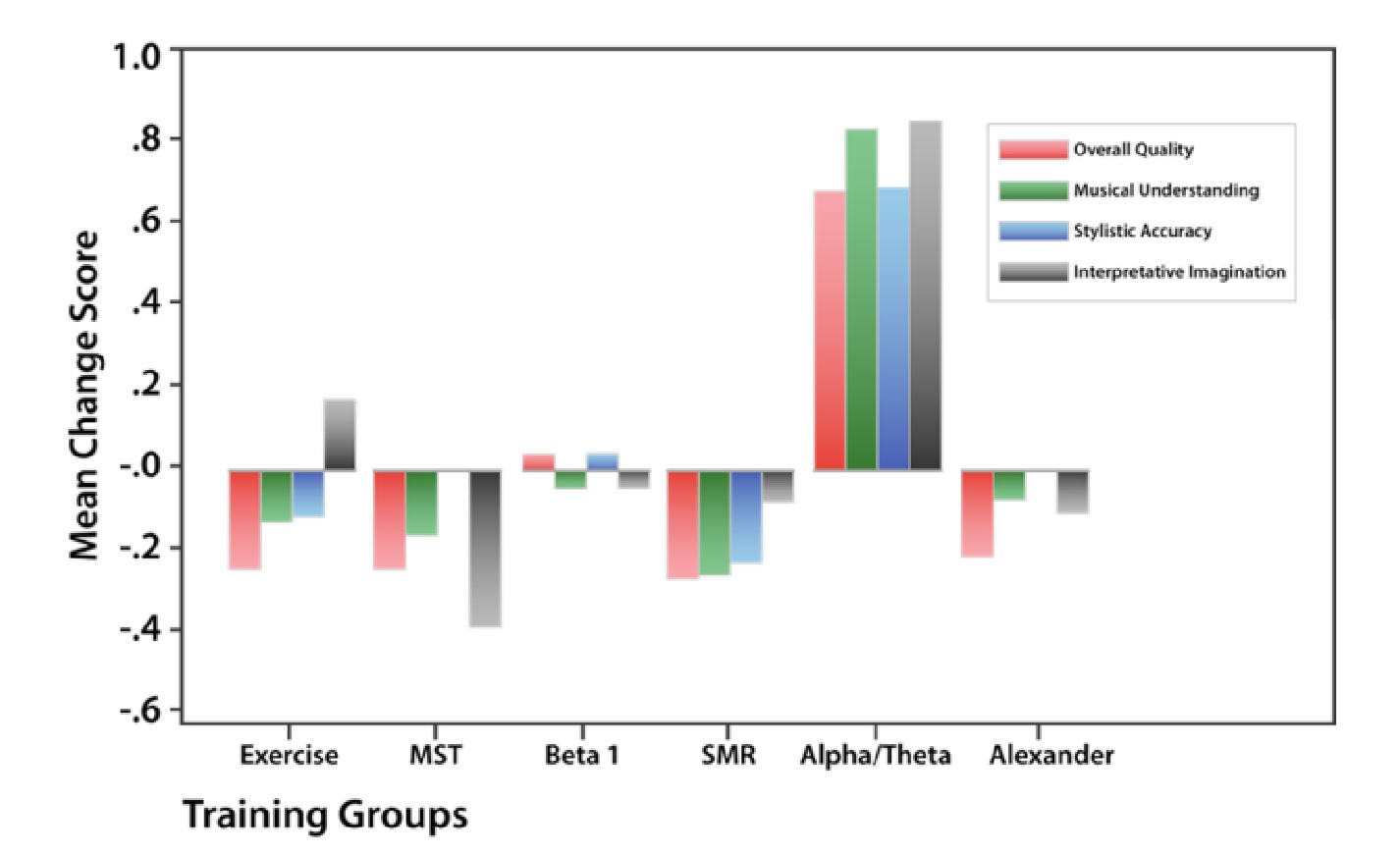
In this 1999 study at Imperial College, London, Alpha Theta Neurofeedback Training was compared to other standard supportive services and relaxation training techniques and exercises. Students of the Royal College of Music, London, were evaluated on their musical performance, having received ten sessions of Alpha Theta Neurofeedback Training. Only the Alpha Theta Neurofeedback Training subset demonstrated gains in musical performance, and these gains were substantial and systematic:
Overall Quality | 14% |
Musical Understanding | 16% |
Stylistic Accuracy | 14% |
Interpretive Imagination | 17% |
Total Average Musical Improvement | 15% |
These impressive gains as judged by blind evaluators represent a substantial improvement. All aspects of musicianship were positively, and greatly affected, including physical ability as well as creativity and insight.
Source: Othmer / Gruzelier
J Gruzelier also finds in a 2014 study that Alpha Theta training benefits both advanced instrumental and novice singing abilities, including improvisation – beyond the outcome of the previous study with elite conservatoire musicians.
Alpha Theta neurofeedback training reduced anxiety in competitive ballroom dancers, as well as increasing cognitive creativity.
Brain Waves Overview
Gamma
| 31 – 100 Hz |
|
Beta · Concentration, interaction, focus, higher cognitive tasks · Higher beta frequencies are also associated with fear and anxiety, fight or flight | 12 – 30 Hz |
|
Alpha · Quiet mind, flowing thoughts, slight detachment, meditative state · 10Hz is a natural rhythm particularly at the back of the head with eyes closed · Serotonin release | 8 – 12 Hz |
|
Theta · Dream-like state with vivid imagery; creative, gateway to the unconscious · Stage 1 sleep and also present in REM sleep · Deep state meditation | 3 – 8 Hz |
|
Delta · Dreamless sleep stage 4 · Bodily recuperation · Growth hormones GHRH and PRL released | 0.5 – 3 Hz |
|
Addiction and Substance Abuse
Alpha Theta neurofeedback training has also been successfully used in treating addiction / substance abuse issues, with nearly half of participants having experienced the Peniston effect – a subsequent allergic reaction to alcohol or other psychoactive substances.
Comorbidities of PTSD / C-PTSD
PTSD inevitably presents with other mental health conditions to some level: Our sleep and sense of emotional security is impaired, potentially leading to focus issues, mood dysregulation, anxiety and a weakened sense of self and being part of a group. See here for further Uses of Neurofeedback Training.
Neurofeedback is a form of complementary therapy and should not be seen as a replacement for conventional medicine. qEEG brain map-based neurofeedback training takes a more holistic approach to brain functioning, rather than just focusing on medical symptoms. It is not intended as a form of diagnosis nor medical intervention nor medical advice per the disclaimer.
Brain Maps and Personalised Brain Training Explained
Personalised Brain Training with Neurofeedback
Neurofeedback lets us train dysrythmic brain areas. With sensors comfortably fitted to the brain areas we want to train, we detect brainwave patterns real-time while watching a movie. When these patterns are inefficient, the volume drops momentarily. This is the feedback we are giving our brain, short and instantaneously.
The brain area we are training recognises this – while our conscious mind is focussed on the movie – and adjusts its behaviour to restore the normal volume. With repetition, throughout a session, learning occurs.
Meanwhile our conscious mind is solely focussed on the movie; the training process is passive in this sense.
The drop in volume is subtle, so we continue to understand the flow of the movie. No current or electrical stimulation is fed to the brain; sensors simply read brainwaves and the feedback is purely audio-visual.
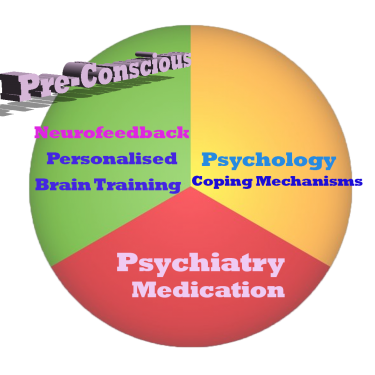
Neurofeedback trains our Pre-Conscious Mind
Rather than engaging the conscious mind, which slows us down, we are training preconscious processes.
This equips us with the ability to live in the moment and attain our potential (if we have to resort to conscious control, we are not living in the moment).
We take a holistic approach to healthy brain self-regulation, rather than categorisation or diagnosis.
Personalised Brain Training is an advanced qEEG brain map-based approach to neurofeedback training developed by the founders of the field. Taking Othmer Method / ILF training methods further, it employs Default Network Training protocols as developed by David Kaiser.
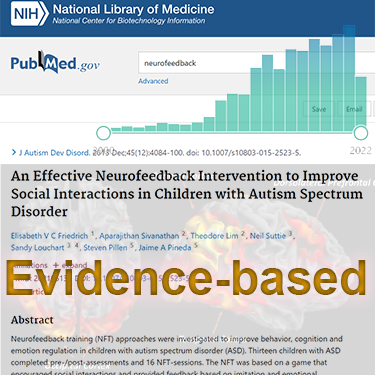
Neurofeedback is Evidence-based
Neurofeedback training is an evidence-based complementary therapy. Its efficacy was first demonstrated some 50 years ago, and with advances in technology, training protocols have become more efficient and the feedback method – watching movies – thoroughly enjoyable.
Neurofeedback is evidence-based. It’s first application was discovered in 1971 when it was used to resolve intractable epilepsy.
There are over 2,000 peer-reviewed research reports on PubMed demonstrating efficacy across a number of pathologies.
In the US, it is an accepted complementary treatment for many challenges.
The Process Explained
Step 1: Brain Map
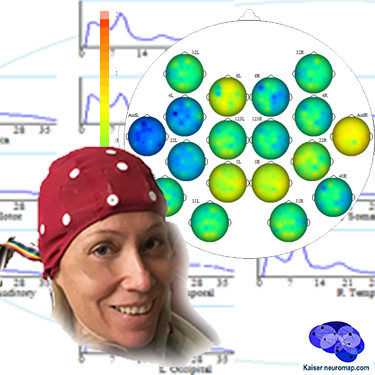
A qEEG recording takes about 45minutes for a 20 minute recording.
A cap with 19 sensors is is fitted to our head and gels inserted to ensure connectivity. The sensors only read – there is a tiny voltage on the surface of our head that these pick up. The gels are easily washed out later. This is also the last time we wear the cap (until a remap after ten sessions); training is done with single sensors.
We analyse the data with Kaiser Neuromap software which gives us a unique view into character traits and vulnerabilities.
Findings are presented in a separate one-hour conversation where we discuss the key elements.
Step 2: Neurofeedback
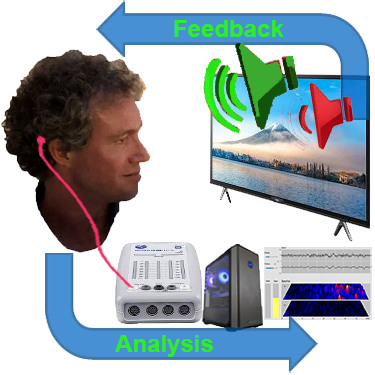
We use a movie of choice as the feedback mechanism – our conscious mind engages with the film, and feedback is delivered by small changes in volume or picture size.
Our pre-conscious mind adapts its behaviour to preserve the more comfortable volume and picture size, and learning occurs.
Volume changes are slight, not stop-start, and the process is enjoyable.
Key is that we are interested in the movie – our conscious mind is engaged with the content, which forms the reward, and our preconscious mind – without our conscious effort – changes its behaviour in response to the feedback.
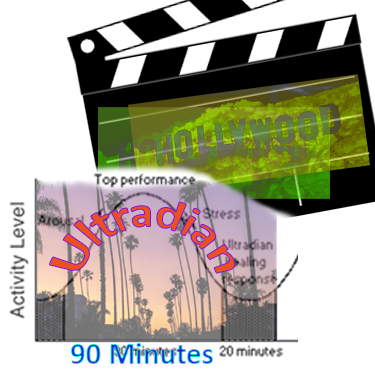
A two hour training session allows us to do 90-110 minutes of neurofeedback training during which we can work on various brain sites.
This captures an entire ultradian rhythm cycle and corresponds to the approximate duration of feature film movies.
We can start with shorter sessions as appropriate, mainly with children.
Ideally, we do two or more sessions per week to start with.
We would expect to see responsiveness within the first few sessions and remap after twenty hours or about ten sessions.
Generally, we would expect to doing twenty sessions over two months, though this can vary substantially.
We can also accommodate intensives, where we do two sessions per day over a number of days, and have had good results with these.
Neurofeedback: Uses and Applications
Personalised Brain Training is a non-invasive, medication-free way to address cortical imbalances. With a Kaiser Neuromap, we understand which brain areas are dysrhythmic, and train these with the most advanced neurofeedback methods.
This provides a more granular approach than categorisation into pathologies. In fact, many mental health issues present in combination with others, and the diagnostic approach can set rigorous hurdles that often result in distinct labels that don’t necessarily capture the entire picture.
The vulnerabilities exposed by a brain map may manifest in various combinations of behavioural and mental health issues. With Personalised Brain Training we look at the brain as a whole. Treatment is non-specific with respect to psychopathologies. For ease of navigation and understanding, the following applications are listed below, along with research evidence, in their separate domains.
